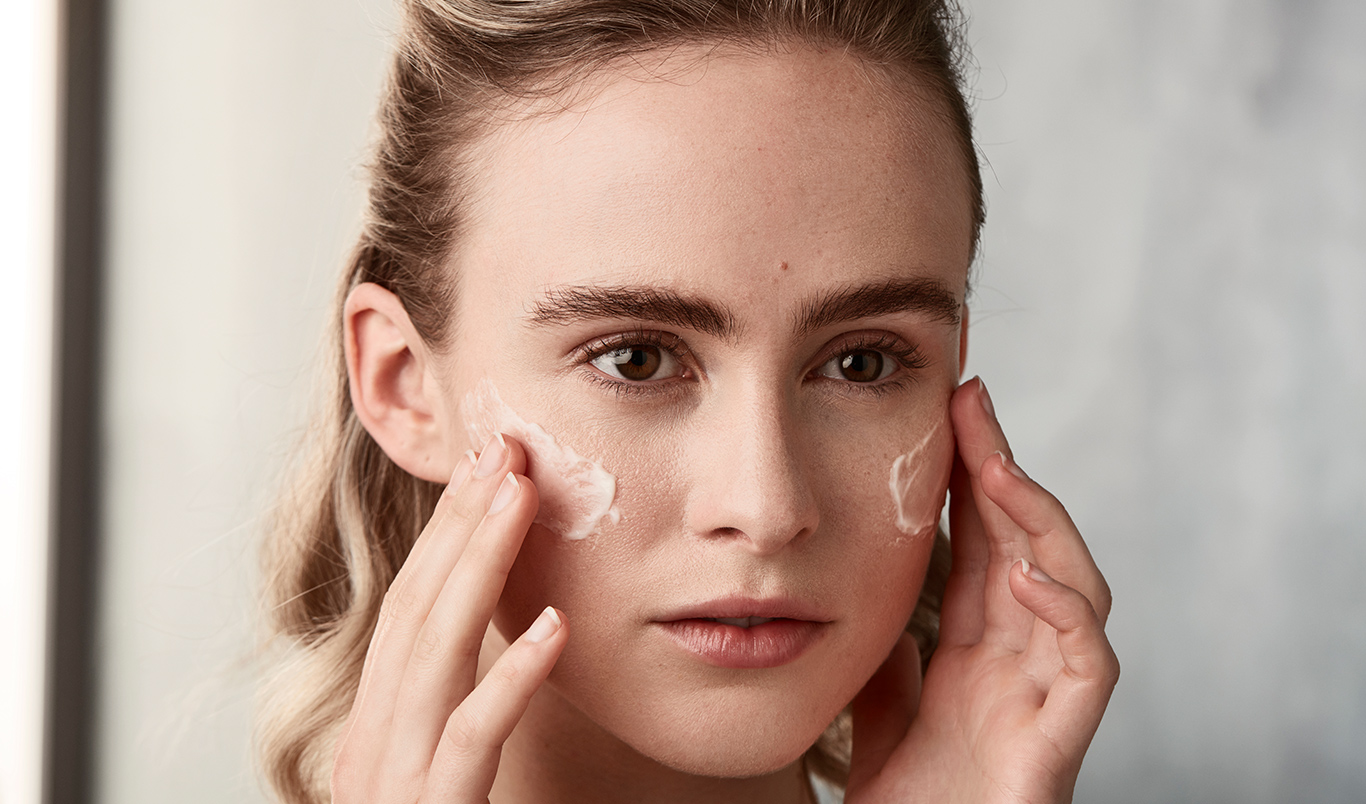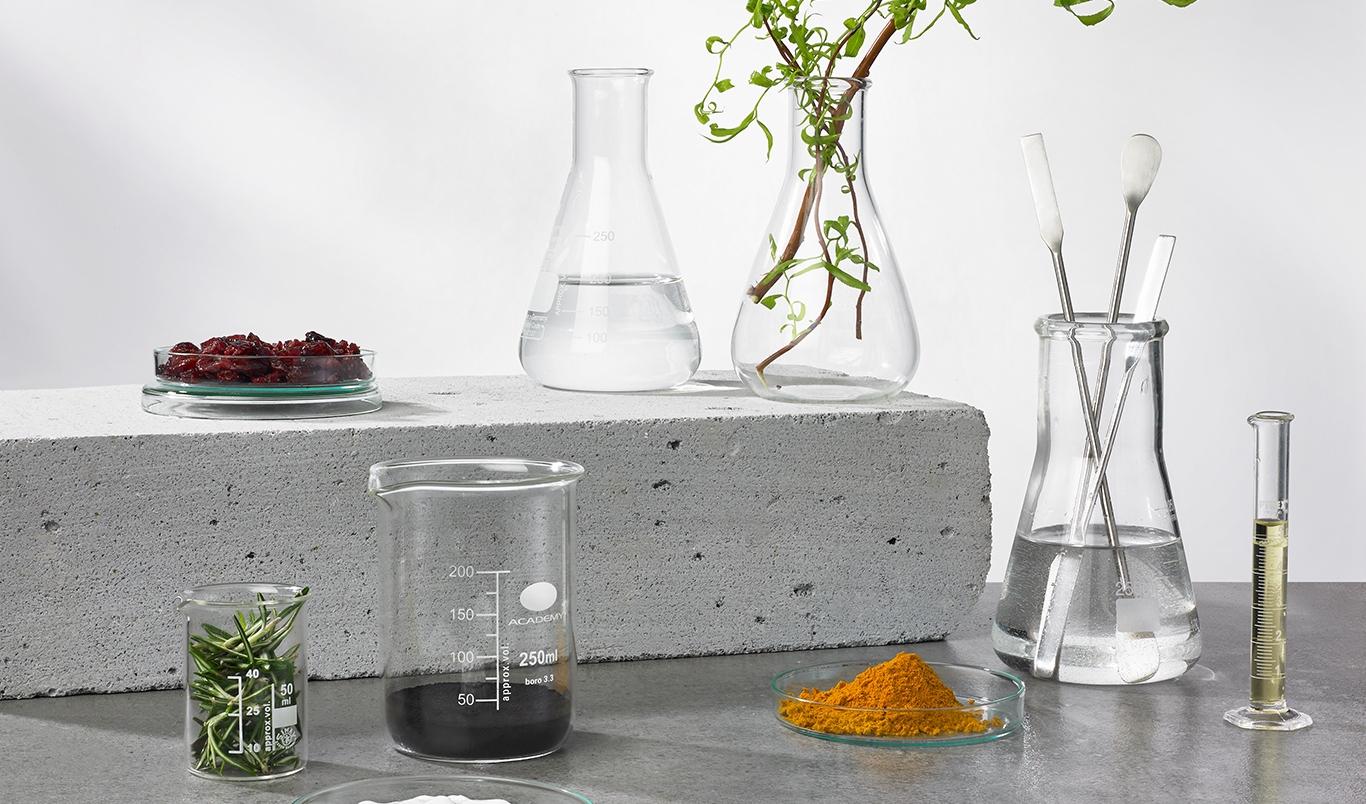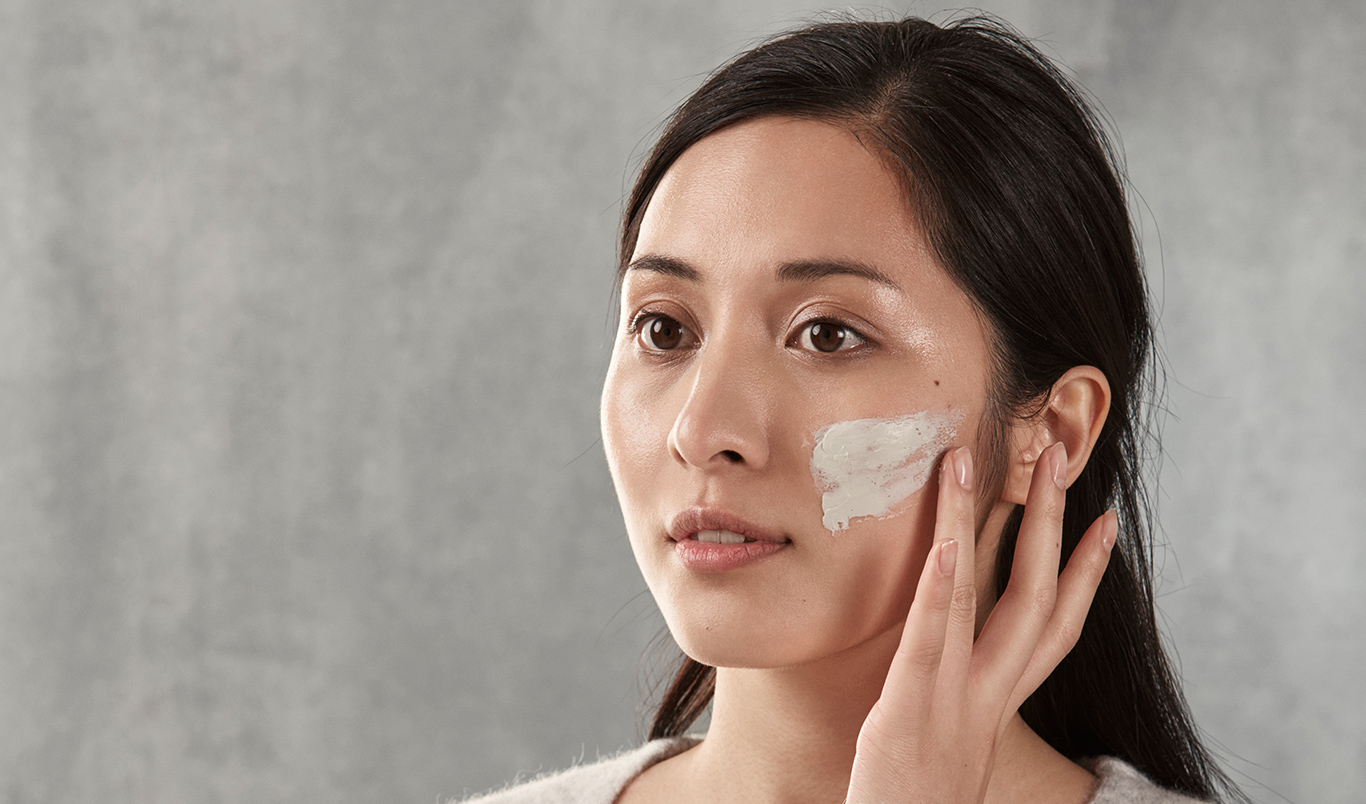
Skin, Explained
As your body’s first line of defence against the environment, the skin is intricately designed to keep your internal organs safe and healthy. The skin is made up of 3 layers; the upper defensive epidermal layer, the middle collagen-filled dermis and the bottom cushioning subcutaneous layer.
Under the Microscope
Let’s start with the lowest layer, where you can find the subcutaneous tissue. Used mainly to store fat, it contains larger blood vessels which can provide nutrients to the skin.
The dermis is the second layer up. Here resides strings of collagen and elastin surrounded by a matrix of molecules. This is the part of the skin that detects touch and heat, in addition to housing the roots of hair follicles and sweat glands. Blood vessels run through the dermis which provide essential nutrients and nourishment to the epidermal skin cells.
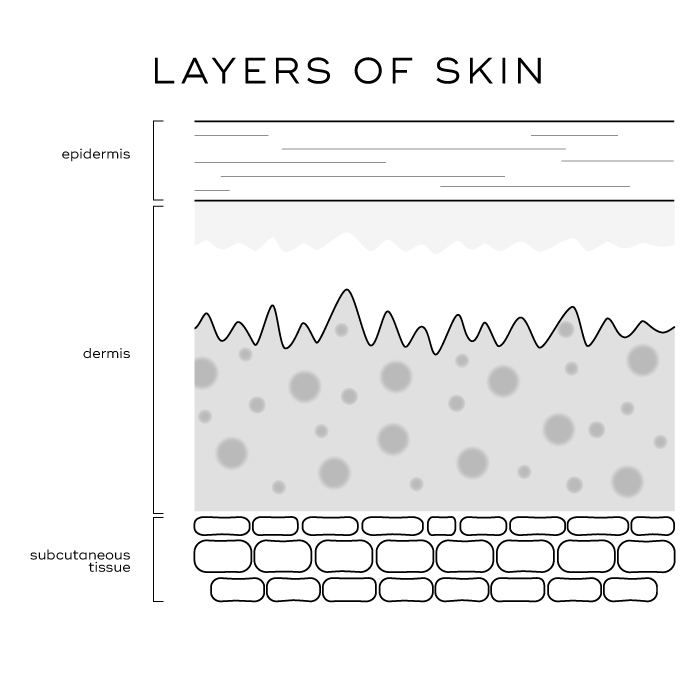

The epidermis is the upper layer of the skin. It is further split into 5 different layers, each with its own unique characteristics and functions. Skin cells are formed in the lowest layers called the stratum basale. Here the cells can rapidly replicate themselves as they still possess a nucleus which stores DNA. Melanocytes, the cells that create melanin to give colour to the complexion, are also found in this layer. The skin cells in the stratum basale move up through the epidermal layers towards the surface, going through subtle changes at each stage. In the upper layers the cells lose their nucleus and become flat, dead skin cells called keratinocytes. These continuously flake off to reveal newer, fresher cells beneath.
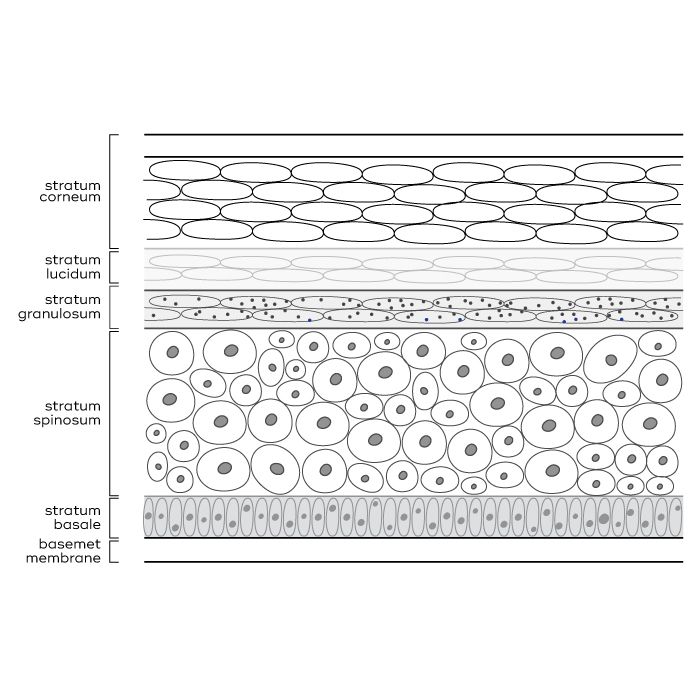
The stratum corneum is the top layer of the epidermis, made up entirely of dead skin cells in brick-like layers. Between the skin cells there is a sea of lipids (oil-soluble molecules) acting as mortar. The lipids are made up of ceramides, cholesterols and fatty acids. This structure provides an impermeable barrier against the environment, protecting the skin from pathogens and blocking the loss of water molecules. The pH of the skin is around 4.5-5.5; slightly acidic due to a layer of sebum which hinders alkaline-loving pathogens.
The skin is the body’s largest organ and as we age it begins to break down. As the years go by and sun damage persists, the collagen and elastin in the dermis are weakened. This leaves skin less firm and elastic. The skin cell renewal process also slows down, which leads to a thinning of the epidermal layer with less protection against the environment. This also allows more water to escape, so aged skin is often less hydrated. To learn more about the causes of skin ageing, read in detail here.
An anti-ageing skincare routine is so important if you want to look 30 when you’re 40 (don’t we all!). But it’s not just about trying to turn back the clock. It’s also simply about having your healthiest skin: even, glowing and radiant - no matter your concern. That’s why we put anti-ageing actives in all of our solutions, so you never have to compromise.
Unfortunately, sun damage is the ultimate cause of premature ageing – it is responsible for up to 80% of the signs of ageing we see on the face.1 The sun’s rays generate free radicals that weaken collagen in the dermis, leading to fine lines and wrinkles. Wear a broad spectrum SPF 30 sunscreen like Advanced Day Total Protect™ everyday to protect your delicate skin cells from damaging UV rays. Essential in stimulating collagen production, add vitamin C to your morning routine and vitamin A to your evening routine. Vitamin A is also able to speed up cellular renewal, leading to healthier, more youthful-looking skin. Follow Medik8’s expertly engineered anti-ageing routine for beautiful skin for life.
1 F. Flament et al., Clinical, Cosmetic and Investigational Dermatology, 2013, 6, pp 221-232


